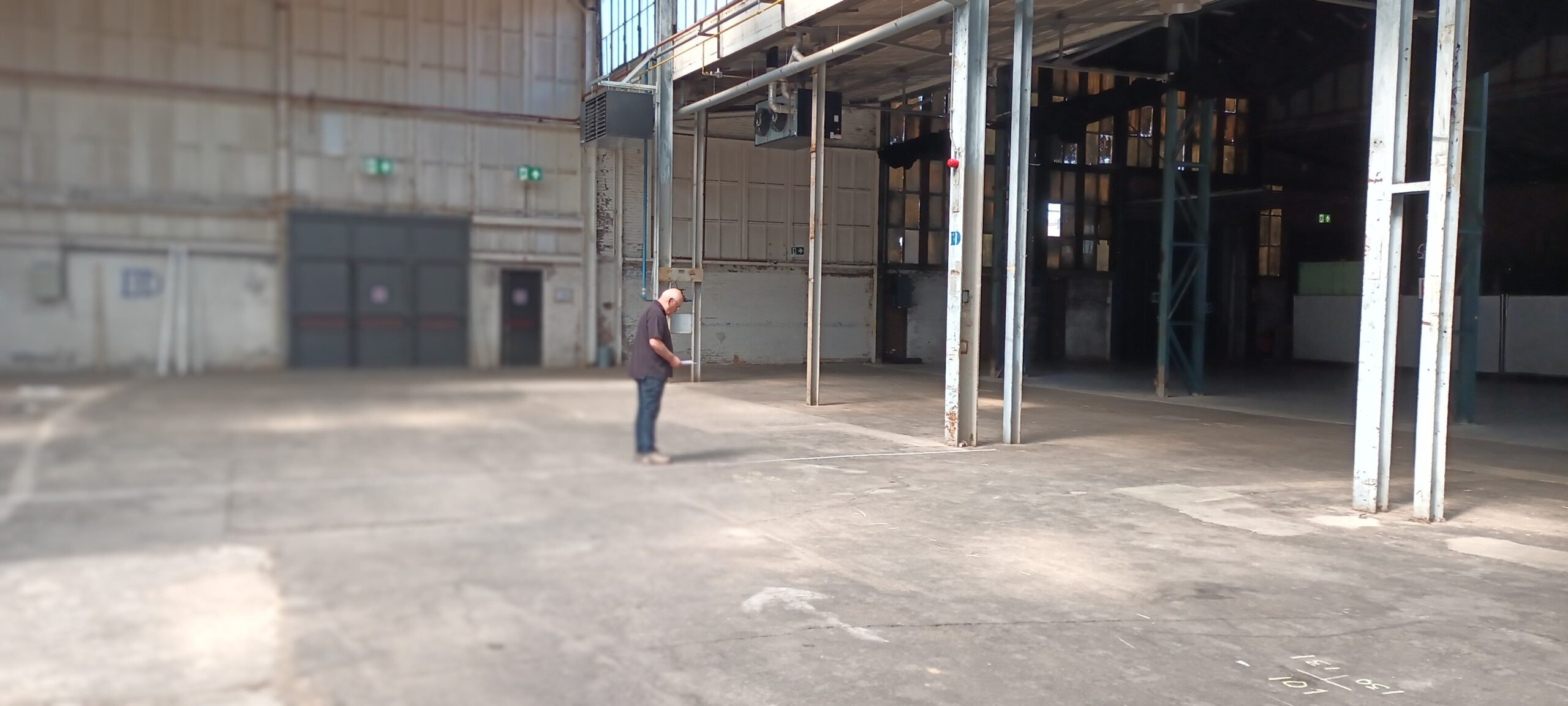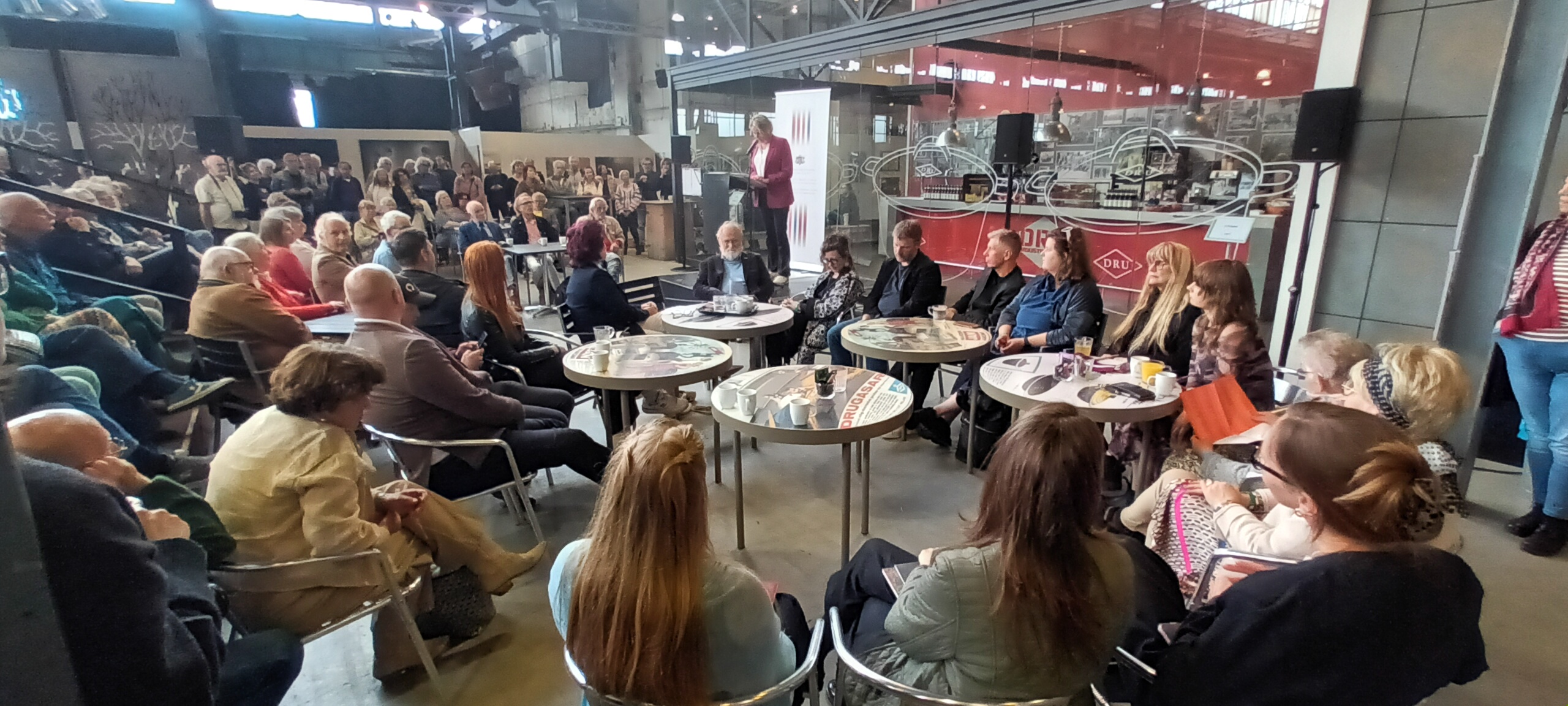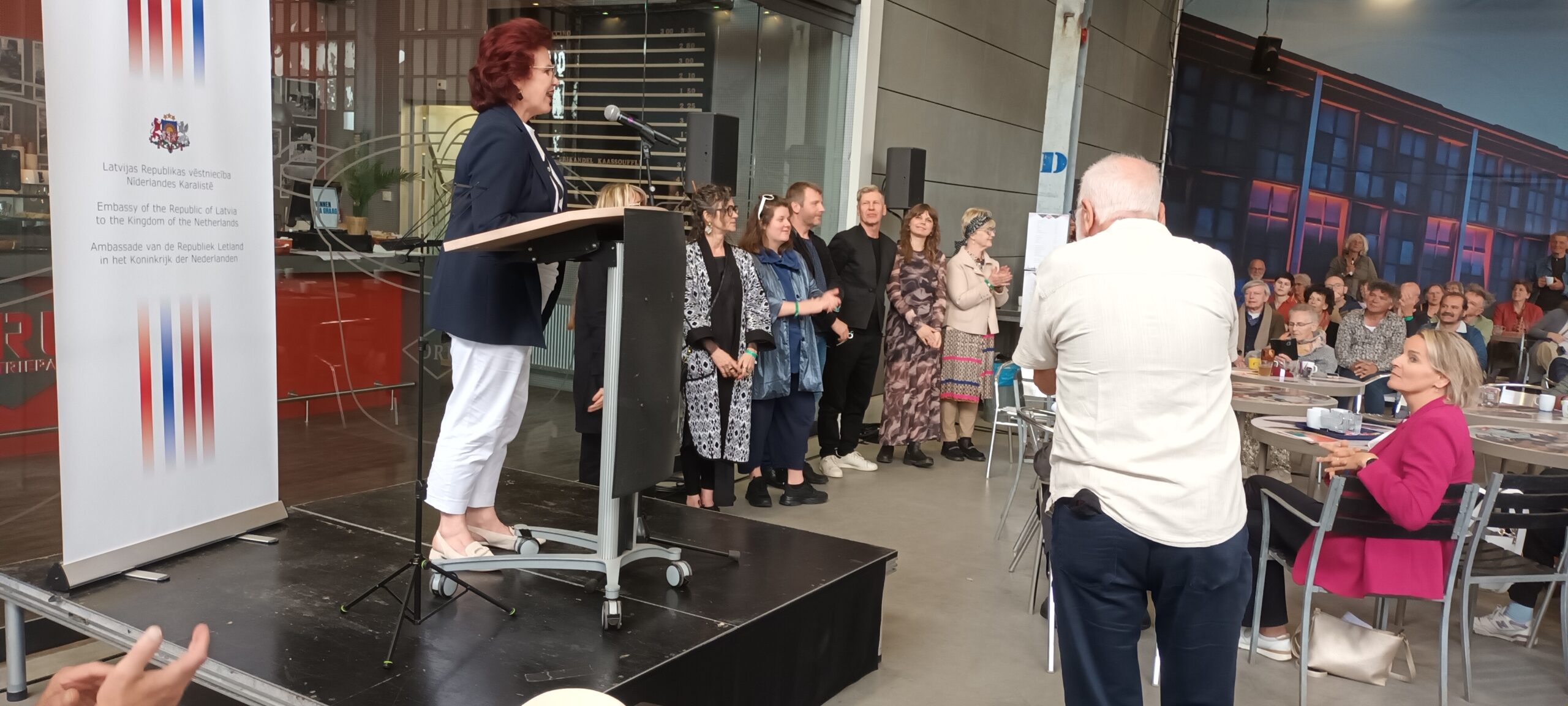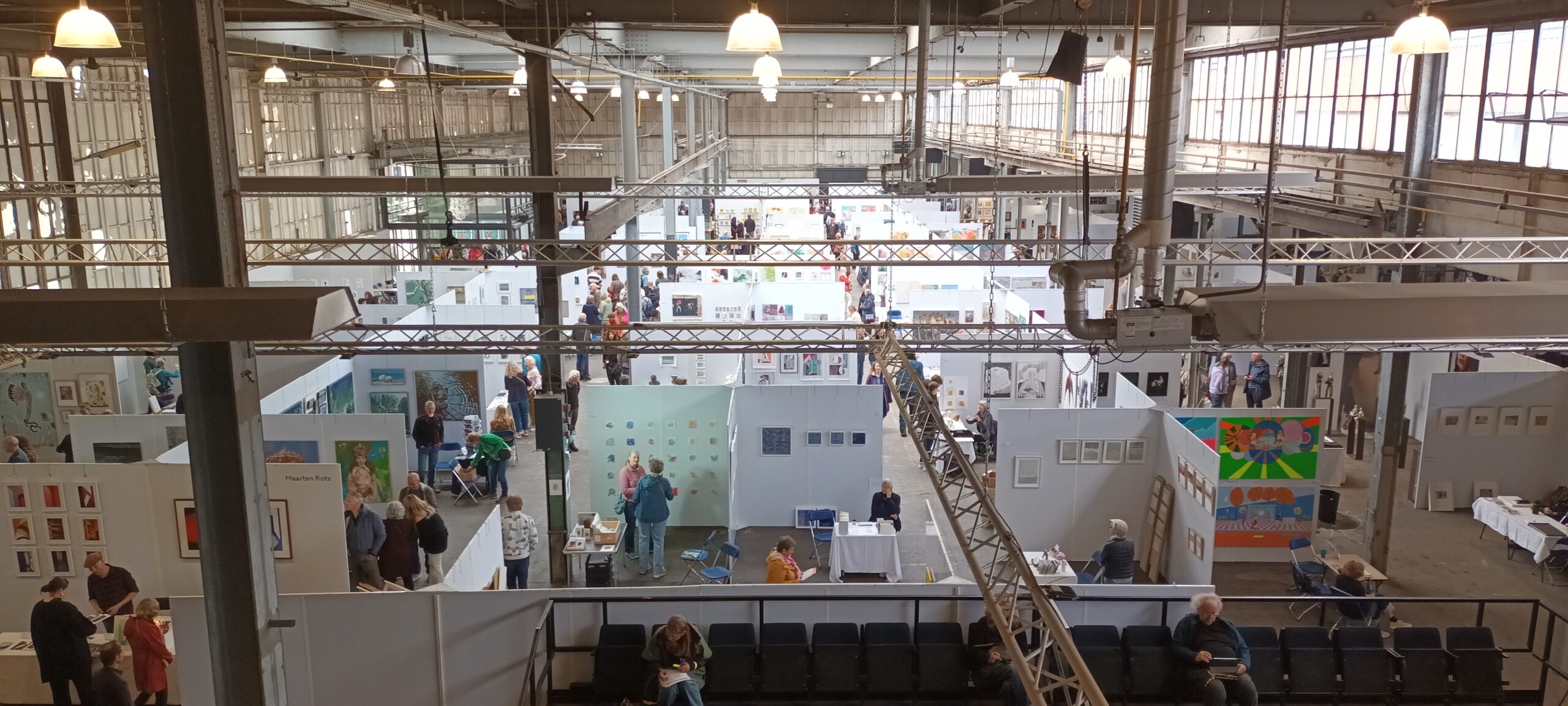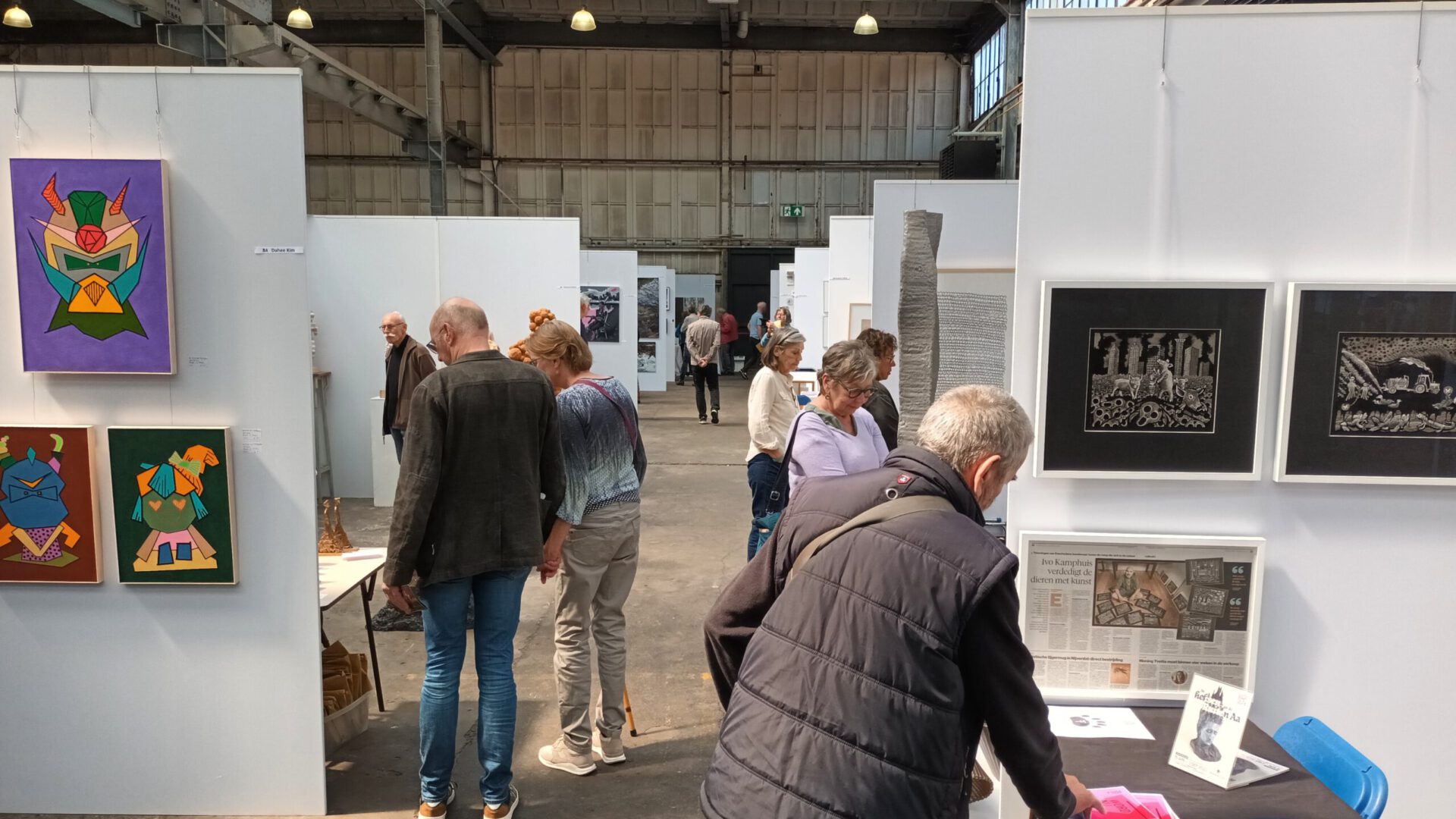1. AMMAMA MALIK
Ammama’s artistry is a manifestation of her unwavering devotion to the timeless act of painting itself, an endeavour that pays homage to the core of this revered craft. Although her compositions and subjects are distinctly contemporary, she artfully places words and concepts in the background, allowing the rich strokes of her brush to draw attention. Her measured approach speaks volumes about her dedication to the traditional style she embraces. Her creations are a harmonious blend of past and present, with a clear echo of the Renaissance and Baroque masterpieces that have left an indelible mark on her artistic mind. Each stroke exudes drama and emotion, meticulously executed with a precision that reflects her commitment to excellence.
2. MARRIAM ARSHAD
Mariam’s artistic style is central to the aesthetics of culture. Her inspiration comes primarily from what she sees, feels and experiences in a world more connected than ever before. She uses her observations to build visual narratives that combine images of everyday, intimate interactions with the symbolism of discrimination in how she silently chooses who is worthy of inclusion.
Her work is about touch and trust. She focuses on street-side professions that deal with nurturing, self-care and visual transformation. Her exploration of this concept began when she studied the textures of skin, especially goosebumps, which are caused by physical and emotional stimuli. Her subjects/characters are mainly: men, women, young street vendors and transgender people.
3. SANA ARJUMAND
Sana Arjumand is a contemporary multidisciplinary visual artist with a focus on painting. Her work consists of intricately layered paint with hypnotically drawn figures, portraits and birds, using a radiant colour palette now known to be unique to her. The work explores the subject of mysticism and spirituality where the geometric pattern symbolises light and the bird has become a metaphorical symbol of energetic beings, suggesting the coexistence of higher dimensions. Big eyes draw us into layers of meaning that relate to other realities. Her work deeply represents the personal inner journey and provides a space for everyone to reflect on their own inner realm. The light worlds and mystical beings she paints flow smoothly into multiple incarnations and offer many streams for people to grasp.
4. SADAF NAEEM
Sadaf Naeem, visual artist from Pakistan, works in painting, mixed media and installation. Sadaf’s work is a transformative process where she deals with domestic spaces and objects specifically related to women. She paints and researches women’s silhouettes to observe the role of women in different cultures and societies, especially comparing the different roles of women in social environments. She makes visible the interconnection of physical and metaphysical spheres, while capturing the essence of the natural world. Through her work, she evokes a sense of wonder and curiosity about the environment and strives to capture the subtle interplay of colours in nature, represented through woven textile patterns and different stitches. In her creative process, she fuses experience, concept and material into a narrative by using multiple painting materials and techniques.
5. YASEEN KHAN
His artworks are the result of experiences, travels and relationships he has built over the years. From a young age, Yaseen worked as a mechanic in a workshop where he decorated trucks with chamak Patti (a medium used to decorate trucks in Pakistan). Through this medium, he was able to study aesthetics and cultural nuances between different regions and styles. He learnt the skills over the years from different ustads (masters) and converted them into a creative art practice, having learnt from the best artists in Pakistan at the prestigious National College of Arts, Lahore. His abstract patterns, lines, colours and depictions of objects stem from his admiration and respect for craft as an artist, mechanic and artisan. His practice raises questions about the various art forms around, which helps him use a very ordinary and understandable language of expression to create art while being relevant and embedded in Pakistan’s traditions and history.
6. HAMZA QAZI
Qazi explores the heightened forms of visual realism, while what is depicted as his pictorial realisation is motivated by an inner authenticity. Interested in depicting figures as series, his paintings have a strong existentialist character depicting fragments of a mosaic of human life and experiences that he painterly transforms into mysterious banality.
7. MIRZA ZEESHAN HUSSAIN
Zeeshan’s work is very personal to him, which he believes reflects human reality as a member of the world. In his words, “Every individual carries a baggage with him”. He uses soft toys in his work to reflect the fragile nature of people. His work explores the reality of each individual in society. His approach to sculpture making is the result of traumatic experiences and he believes that we are all made up of trauma and that these traumas are collective and you cannot distinguish them from each other. Moreover, these emotions cannot be suppressed, so they take the form of enormous baggage that we carry with us until our last breath.
8. BAZIL HABIB
Bazil’s work explores the impact of colour on the human psyche. He is fascinated by the power to create emotional responses. He uses colours very boldly and explores the interplay of colours, creating chaotic compositions that put the viewer in a trance, in his own words, “engaging the viewer on a visceral level”.
His inspiration comes from his love of night photography, especially urban scenes with rich, saturated colours, and he captures these scenes in paintings by distilling and deconstructing fragmentary and shapeless memories into precise minimal and geometric forms. The overlapping windows, stairs and spaces in his paintings are a metaphor for the complex and often fragmented nature of human beings. His art seems to create a dialogue between the viewer and the work, evoking emotional responses that transcend language and culture, like the work of a true storyteller.
9. MUDASSAR MANZOOR
Muddasar believes that the reality of the mysterious universe as explained by Sidharatha (Buddha) is “Form is emptiness & emptiness is form”. His work is an exploration of the universe, in which he tries to find himself. Trained as a miniature artist, he uses the miniature technique at its best, you can see the passion and love for making art in his work. I have been following his work for many years and one word that describes his work is “dedication”. His work shows brilliance and mastery of image-making technique. He has a very humble personality and he believes that his work speaks many languages, touching the heart of the viewer and taking him on a journey through the wonders of the universe, in a way that you travel through the galaxy and explore the mysticism of the universe.
10. WASEEM AHMED
Ahmed has distinguished his work by producing creatively penetrating images with innovative stylistic and iconographic contributions within a practice that is strictly traditional, making him one of the most acclaimed contemporary artists of his kind.
Ahmed works in a variety of formats, combining drawings, gouache, pigments and gold or silver leaf on Wasli paper, his favourite substrate. At the heart of his images is the human figure and the boundaries that separate humanity in relation to its own historical and social context and in close connection with the conflict and displacement that characterise our current times. His rich imagery often refers to mythology or history, both eastern and western. His work bridges the cultural heritage with the turbulence of the times.
11. JAMIL BALOCH
Jamil BaIoch is a man who believes that all people are equal and his work reflects issues that affect humanity. Jamil does not believe in divisions created by social behaviour or geographical boundaries, his inspiration comes from all places where human issues arise. He is an avid observer of nature, not just the area where he was born or where he lives.
He experiments with materials to create vivid images that are mesmerising and tell a story. To me, he is a storyteller who gets his stories from nature, from the people around him, all together the human story of survival. He has worked in various media such as sculpture, drawing, painting, video and mixed media.
12. R.M. NEEEM
In his artistic exploration, Naeem delves into the profound theme of forgiveness and renewal after death. He uses various symbols in his sculptures, such as the coffin and the book. He explores the reality of life and delves into the profound concept of life after death, as depicted in different religions. Through his etching print of a coffin from which plants and trees sprout, and in another etching print of a boy reading a book, aiming to symbolise the eternal cycle of life, death and rebirth.
His artworks serve as a visual metaphor for the belief in resurrection and the continuity of existence beyond the physical realm. The images of life emerging from death reflect the spiritual essence of renewal and rebirth inherent in the religious concept of the afterlife.
Moreover, by including elements of environmental pollution in the composition, he draws attention to the interconnectedness of life and the urgent need to address the environmental challenges threatening our planet.
Zafar Iqbal – curator

